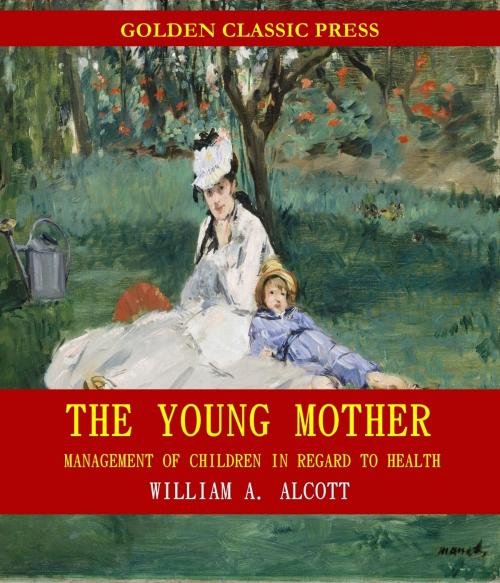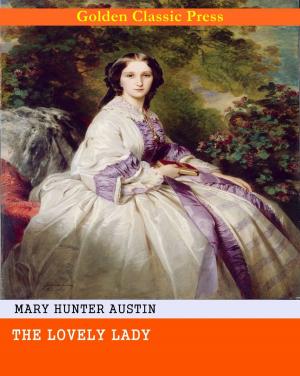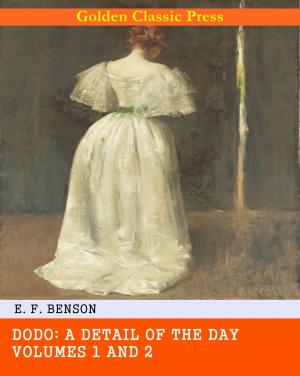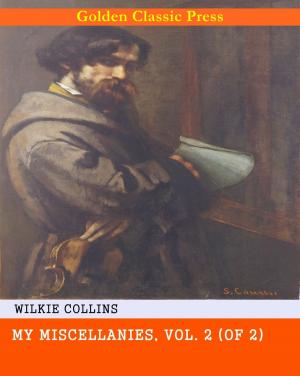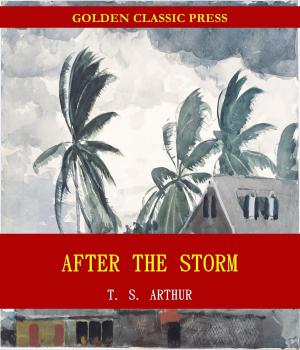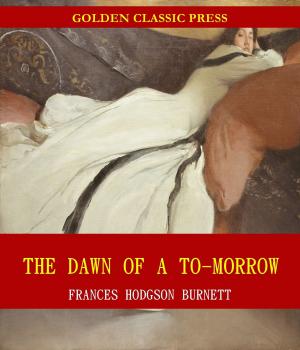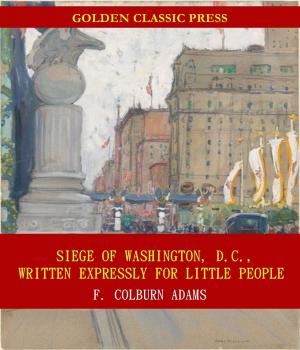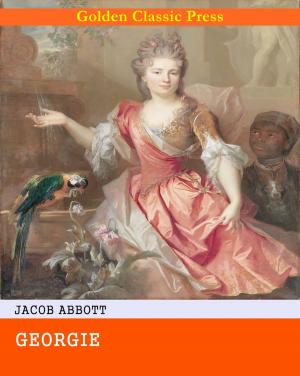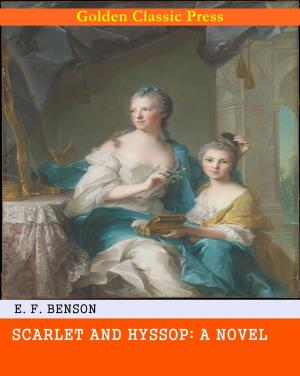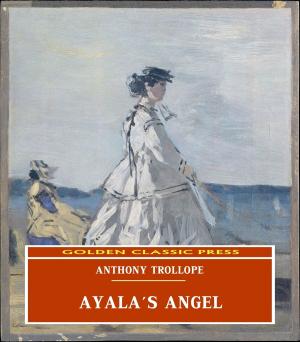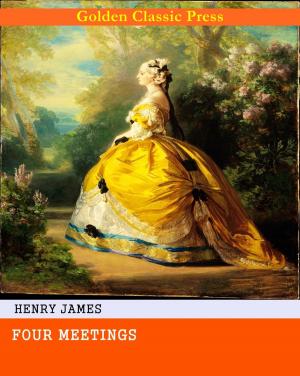The Young Mother: Management of Children in Regard to Health
Nonfiction, Home & Garden, The Home, Health & Well Being, Self Help, Social & Cultural Studies| Author: | William A. Alcott | ISBN: | 1230002981222 |
| Publisher: | GOLDEN CLASSIC PRESS | Publication: | December 7, 2018 |
| Imprint: | Language: | English |
| Author: | William A. Alcott |
| ISBN: | 1230002981222 |
| Publisher: | GOLDEN CLASSIC PRESS |
| Publication: | December 7, 2018 |
| Imprint: | |
| Language: | English |
*** Original and Unabridged Content. Made available by GOLDEN CLASSIC PRESS***
Synopsis:
It is far from being in the power of every young mother to procure a suitable room for a nursery. In the present state of society, the majority must be contented with such places as they can get. Still there are various reasons for saying what a nursery should be. 1. It may be of service to those who have the power of selection. 2. Information cannot injure those who have not. 3. It may lead those who have wealth to extend the hand of charity in this important direction; for there are not a few who have little sympathy with the wants and distresses of the adult poor, who will yet open their hearts and unfold their hands for the relief of suffering infancy.
Among those who have what is called a nursery, few select for this purpose the most appropriate part of the building. It is not unfrequently the one that can best be spared, is most retired, or most convenient. Whether it is most favorable to the health and happiness of its occupants, is usually at best a secondary consideration.
But this ought not so to be. A nursery should never, for example, be on a ground floor, or in a shaded situation, or in any circumstances which expose it to dampness, or hinder the occasional approach of the light of the sun. It should be spacious, with dry walls, high ceiling, and tight windows. The latter should always be so constructed that the upper sash can be lowered when we wish to admit or exclude air. It should have a chimney, if possible; but if not, there should be suitable holes in the ceiling, for the purposes of ventilation.
The windows should have shutters, so that the room, when necessary, can be darkened—and green curtains. Some writers say that the windows should have cross bars before them; but if they do not descend within three feet of the floor, such an arrangement can hardly be required.
It is highly desirable that every nursery should consist of two rooms, opening into each other; or what is still better, of one large room, with a sliding or swinging partition in the middle. The use of this is, that the mother and child may retire to one, while the other is being swept or ventilated. They would thus avoid damp air, currents, and dust. Such an arrangement would also give the occupants a room, fresh, clean and sweet, in the morning, (which is a very great advantage,) after having rendered the air of the other foul by sleeping in it.
In winter, and while there is an infant in the nursery, just beginning to walk, it is recommended by many to cover the floor with a carpet. The only advantage which they mention is, that it secures the child from injury if it falls. But I have seldom seen lasting injury inflicted by simple falls on the hard floor; and there are so many objections to carpeting a nursery, since it favors an accumulation of dust, bad air, damp, grease, and other impurities, that it seems to me preferable to omit it. Many physicians, I must own, recommend carpets during winter, though not in summer; and in no case, unless they are well shaken and aired, at least once a week.
No furniture should be admissible, except the beds for the mother and child, a table, and a few chairs. With the best writers and highest authorities on the subject, I am decidedly of opinion that all feather beds ought effectually and forever to be excluded from nurseries. The reasons for this prohibition will appear hereafter.
Every nursery should, if possible, be free from holes or crevices; otherwise the occupants will be exposed to currents of air, and their sometimes terrible and always injurious consequences. The room may, in this way, be kept at a lower medium temperature—a point of very great importance.
Cats and dogs, I believe, are usually excluded from the nursery; if not, they ought to be. For though the apprehension of cats 'sucking the child's breath,' is wholly groundless, yet they may be provoked by the rude attacks of a child to inflict upon it a lasting injury. Besides, they assist, by respiration, in contaminating the air
**
### About the Author
William A. Alcott (1798-1859), physician, relative of "Little Women" author Louisa May Alcott, and founding member of the American Vegetarian Society, was also an educator, reformer, physician, and author of 108 books. He became one of the most prolific authors in early American history, and he wrote frequently on health and educational reform, as well as physical education, school and house design, family life, and diet. Many of his works are still widely cited today.
*** Original and Unabridged Content. Made available by GOLDEN CLASSIC PRESS***
Synopsis:
It is far from being in the power of every young mother to procure a suitable room for a nursery. In the present state of society, the majority must be contented with such places as they can get. Still there are various reasons for saying what a nursery should be. 1. It may be of service to those who have the power of selection. 2. Information cannot injure those who have not. 3. It may lead those who have wealth to extend the hand of charity in this important direction; for there are not a few who have little sympathy with the wants and distresses of the adult poor, who will yet open their hearts and unfold their hands for the relief of suffering infancy.
Among those who have what is called a nursery, few select for this purpose the most appropriate part of the building. It is not unfrequently the one that can best be spared, is most retired, or most convenient. Whether it is most favorable to the health and happiness of its occupants, is usually at best a secondary consideration.
But this ought not so to be. A nursery should never, for example, be on a ground floor, or in a shaded situation, or in any circumstances which expose it to dampness, or hinder the occasional approach of the light of the sun. It should be spacious, with dry walls, high ceiling, and tight windows. The latter should always be so constructed that the upper sash can be lowered when we wish to admit or exclude air. It should have a chimney, if possible; but if not, there should be suitable holes in the ceiling, for the purposes of ventilation.
The windows should have shutters, so that the room, when necessary, can be darkened—and green curtains. Some writers say that the windows should have cross bars before them; but if they do not descend within three feet of the floor, such an arrangement can hardly be required.
It is highly desirable that every nursery should consist of two rooms, opening into each other; or what is still better, of one large room, with a sliding or swinging partition in the middle. The use of this is, that the mother and child may retire to one, while the other is being swept or ventilated. They would thus avoid damp air, currents, and dust. Such an arrangement would also give the occupants a room, fresh, clean and sweet, in the morning, (which is a very great advantage,) after having rendered the air of the other foul by sleeping in it.
In winter, and while there is an infant in the nursery, just beginning to walk, it is recommended by many to cover the floor with a carpet. The only advantage which they mention is, that it secures the child from injury if it falls. But I have seldom seen lasting injury inflicted by simple falls on the hard floor; and there are so many objections to carpeting a nursery, since it favors an accumulation of dust, bad air, damp, grease, and other impurities, that it seems to me preferable to omit it. Many physicians, I must own, recommend carpets during winter, though not in summer; and in no case, unless they are well shaken and aired, at least once a week.
No furniture should be admissible, except the beds for the mother and child, a table, and a few chairs. With the best writers and highest authorities on the subject, I am decidedly of opinion that all feather beds ought effectually and forever to be excluded from nurseries. The reasons for this prohibition will appear hereafter.
Every nursery should, if possible, be free from holes or crevices; otherwise the occupants will be exposed to currents of air, and their sometimes terrible and always injurious consequences. The room may, in this way, be kept at a lower medium temperature—a point of very great importance.
Cats and dogs, I believe, are usually excluded from the nursery; if not, they ought to be. For though the apprehension of cats 'sucking the child's breath,' is wholly groundless, yet they may be provoked by the rude attacks of a child to inflict upon it a lasting injury. Besides, they assist, by respiration, in contaminating the air
**
### About the Author
William A. Alcott (1798-1859), physician, relative of "Little Women" author Louisa May Alcott, and founding member of the American Vegetarian Society, was also an educator, reformer, physician, and author of 108 books. He became one of the most prolific authors in early American history, and he wrote frequently on health and educational reform, as well as physical education, school and house design, family life, and diet. Many of his works are still widely cited today.
